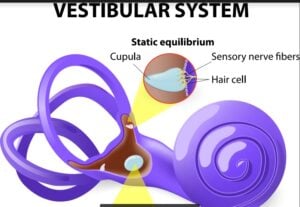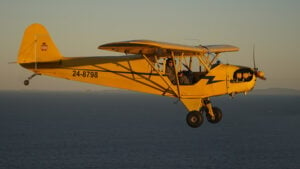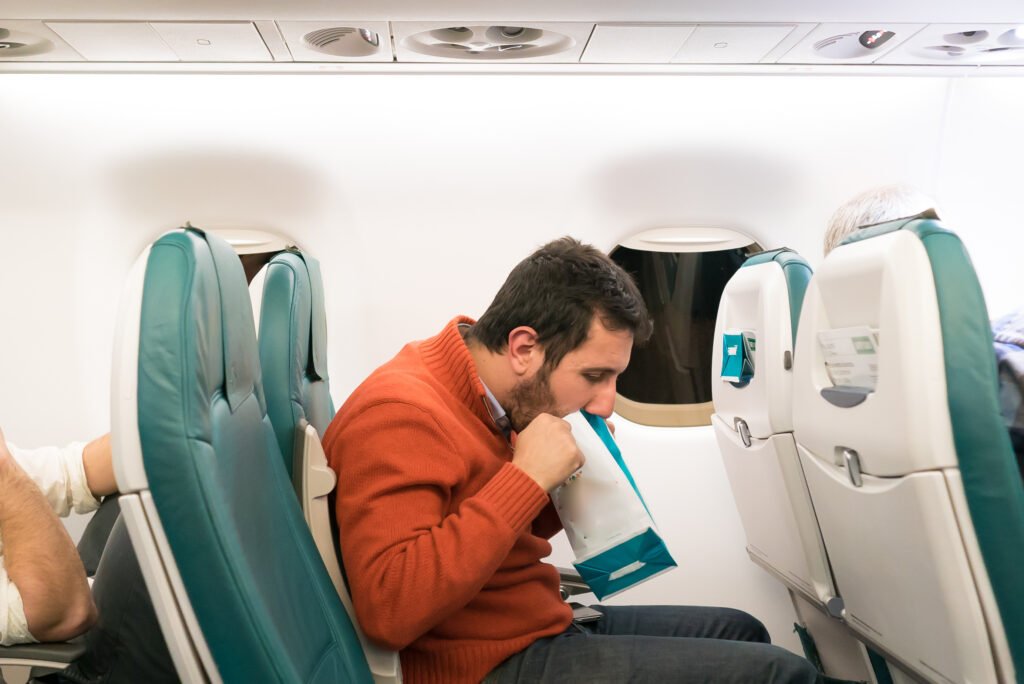The reality is that most pilots and passengers in light aircraft have felt the effects of motion sickness at some point in their lives. It might have been just a slight feeling of uneasiness or it could have been a full-blown projectile event.
Understanding what causes motion sickness and how to avoid it, is very important for both pilots and passengers so they can mitigate the risks that are associated with sickness when flying a light aircraft.
What causes motion sickness?
Motion sickness is caused by conflicting information sent by your eyes and vestibular system. Motion sickness can occur on any object that is moving but is generally most commonly experienced on a boat, vehicle or aircraft.
A good example of this is when you fly through light turbulence, and your eyes are looking at the horizon and do not sense any movement, the information from your eyes is telling the brain that no movement is occurring and you are at rest.
However the vestibular system in the inner ear (more about this soon) is telling the brain that there is movement. The conflicting data to the brain can cause motion sickness.
Balance
The inner ear is also very important as it contributes to our sense of balance. Most of our balance comes visually from our eyes but the ears also contain a balance mechanism to support our vision and as a backup to maintaining balance.

The vestibular system
The vestibular system is located in each inner ear. The system contains semicircular canals that contain a fluid with tiny hairs that can detect movement, on the inside of the canals. These hairs send information to the brain to help assist with balance.
This information helps the brain work out whether you are moving backwards or forwards, up or down, and whether you are lying down or standing up.
While the inner ear balance system is a great back up system it cannot be solely relied upon, particularly when flying. When flying, the aircraft experiences acceleration and deceleration forces that can cause the inner ear fluid to misinterpret the information and send the wrong information to the brain.
Each ear contains three semicircular canals and these are roughly positioned at right angles to each other. They are aligned this way so they can detect movement in three dimensional space.
Some of the early warning signs for motion sickness include sweating and the individual may become quiet and pale.
Symptoms of motion sickness include:
- Pale skin
- Feeling nauseous
- Increase in sweat
- Loss of appetite
- Dizziness
- Inability to concentrate
- Shallow breathing
The dangers of motion sickness
For pilots, motion sickness is a real threat that must be avoided as much as possible.
Even slight motion sickness affects the individual’s cognitive function and ability to concentrate on any task. Severe motion sickness could actually lead to total pilot or passenger incapacitation.
Avoiding motion sickness
Eating a light meal before flying, and avoiding dairy food, is one way of reducing motion sickness. Also ensuring the cockpit is well ventilated and – for VFR pilots – that your eyes are on the horizon for the majority of the time, is helpful. Try not to make any abrupt head movements that could also disrupt the vestibular system.
Pilots are not allowed to take most motion sickness medication, but ginger tablets are a natural remedy which can be used in moderation and may prevent or reduce the effects of motion sickness. The good news is that over time, most student pilots build a tolerance for motion sickness and the symptoms eventually disappear.
Only take passengers flying on calm days
If you are taking a first time passenger for a flight, please don’t take them on a day with high winds, severe heat and or turbulence. It is a sure way to ensure the sick bag will be used and they will never want to fly with you again!

Fly the plane like an airliner (no abrupt flying)
If you are an instructor and do not want your student to get sick, or if you are a pilot and don’t want your passenger to get sick, this one is the easiest method I know to avoid air sickness. My recommendation to all pilots and flight instructors (other than when doing stall and steep turn lessons) is to fly the aircraft like a mini airliner jet. When you fly in an airliner there are usually no abrupt movements.
Climbs and turns are always made gently and slowly. This gives time for the vestibular system to catch up with what the eyes are seeing. Quick abrupt movements are a sure way to get everyone sick very quickly!
What to eat before flying
It is a misconception that having an empty stomach will help the body avoid air sickness. Having no food in your stomach is a sure way of getting motion sickness.
Being well hydrated and having something light to eat before flying is very important. Any oily or fried food and any dairy foods should be avoided. Foods such as bananas, breads, almonds and crackers are examples of foods that can assist in decreasing the chances of getting air sickness.
Treatment of motion sickness
It is also a good idea to take sickbags in the aircraft in case any passengers experience air sickness. If you or your passenger experience motion sickness, try to relax and get as much fresh air as possible. If you are flying with an instructor, inform your instructor.
Do not conduct any abrupt manoeuvres and keep your eyes on the horizon until the air sickness passes. Once you are on the ground, the quickest way to recover from the effects of motion sickness is to ensure you are well hydrated and to lie down in a cool dark room.

The good news is, you will get used to it (eventually)
The majority of pilots (myself included) eventually adjust to the effects of flying. Passengers may not, as they may not fly enough in light aircraft to overcome the effects of motion sickness, this is why flying on a calm day with no abrupt movements is so important when flying with passengers.
The more your senses are exposed to flying in three dimensions, the more the effects of motion sickness will reduce. I have known airline pilots and air force fighter pilots who suffered severe air sickness during their early training and eventually their bodies adjusted and they no longer experience air sickness.
Flying can be fun and rewarding. The more knowledge the instructor or pilot has about motion sickness avoidance, the more likely students will continue their flight training and become a student pilot themselves.
The GoFly Online Team wants to help you become the best pilot you can be, please try our free 7-day trial to access all of our flight training videos, theory books and practice exams. Happy and safe flying.




